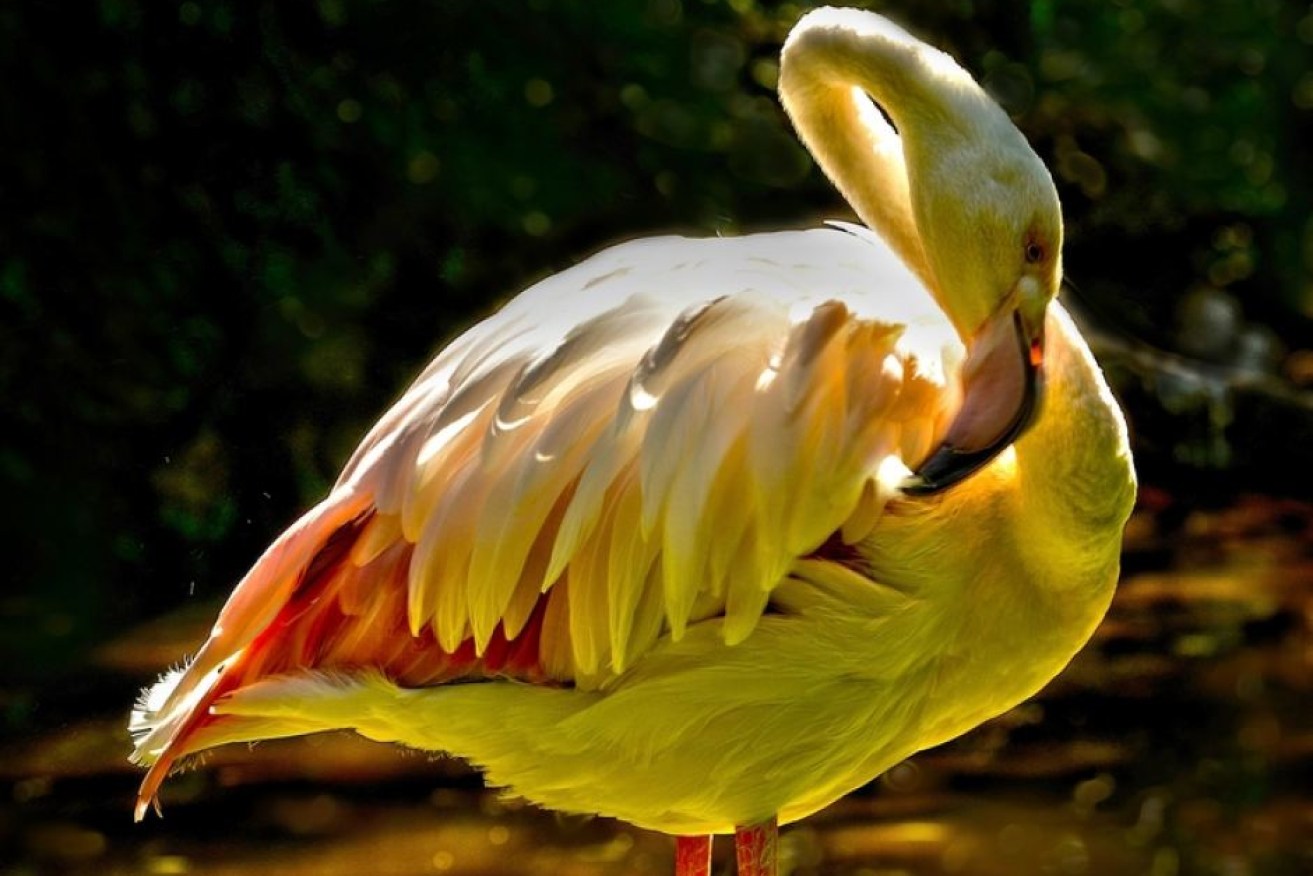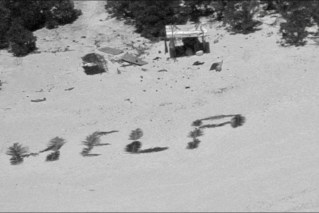Prehistoric pink flamingos once walked the arid zones of Central Australia

The greater flamingo is a similar species to some of the flamingo bones found near Alice Springs. Photo: Brian Cartwright/ABC
The red sandy desert in Central Australia was once home to majestic birds that are now synonymous with South America, parts of Africa and Asia.
Pink flamingos shared waterways and lakes with other prehistoric creatures like the massive goose-like flightless bird, Dromornis stirtoni.
Only five flamingo bones have been found at the Alcoota fossil site 250 kilometres north-east of Alice Springs according to Dr Adam Yates, senior curator of Earth Sciences at the Museum and Art Gallery of the Northern Territory.
The most recent flamingo bone was discovered by Dr Yates, who is the lead palaeontologist at the site, in 2015.
“The earliest one that I know of is a bone that ended up in the Museum of Victoria. So that would have been collected in the 1970s by the expedition run by Tom Rich and Mike Archer,” he said.
“They’re quite rare. We haven’t found very many. In our collections at the Museum of Central Australia in Alice Springs, we have a total of four bones.”

An artist’s impression of what the prehistoric flamingo from Central Australia, Phoeniconotius eyrensis, and the Robust Eyean Flamingo. Photo: Frank Knight/ABC
Despite never finding a complete skeleton, Dr Yates was confident the specimens were from two separate species of flamingo.
One specimen is only three-and-a-half centimetres long and is the top of a long and thin foot bone.
“There are some anatomical features of it that are quite distinctive.
“In particular this structure that sticks out the back. So this is where the ankle joint would have been there so we would have had the shin bones articulating into those little depressions there and this triangular structure sticking out the back.”
The structure was typical but the shape varied depending on the bird.
“This particular rather sort of shark fin-shaped one that’s a bit lower than the ankle joint is very distinctive for flamingos. We’ve actually found bones of two different species that are two distinct sizes.
“One appears to be similar to the modern lesser flamingo and possibly about the same size. The other one appears to be similar to the modern greater flamingo and at least the modern one looks similar to other fossil flamingos that have been found in the Lake Eyre Basin further south in the centre of South Australia.
“So it’s probably the same species but we can’t be 100 per cent certain of that because we found so little of it.”
Wetter climate in outback Australia
Dr Yates estimated flamingos lived in Central Australia between 23 to 25 million years ago when the climate was much wetter.
“Although we haven’t found a lot of flamingos, the fact that there are any flamingos at all tells us that there were definitely shallow lakes or very wide flat pans that were full of water at least some parts of the year, enough to bring flamingos in,” he said.
The pink colouring of modern flamingos came from eating crustaceans which were still present after rain in Central Australian waterways.
“Brine shrimp are not a rare thing. If you go to some of the salt pans, clay pans after a big rain you’ll find that they can fill up with brine shrimp very quickly,” Dr Yates said.

One of the four flamingo bones found in Central Australia at the Alcoota fossil deposit 250 kilometres north-east of Alice Springs. Photo: ABC
The flamingos were not contained to the area – they were found all over the continent.
“During their heyday there were more species of flamingo living in Australia than anywhere else in the world – up to as many as five species at one time,” he said.
It is unclear what caused their demise in Central Australia.
“Alcoota only offers us a brief window, so the window of preservation was basically open from say eight million to six million years ago after which fossilisation stopped and we don’t have further deposits,” he said.
“The flamingos could have lived on. We just don’t know because there were no fossils forming after that time.”
-ABC








